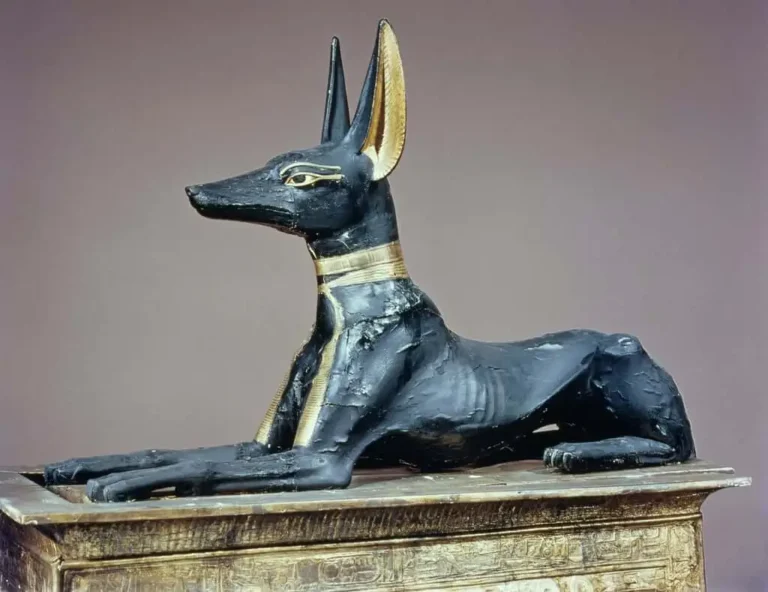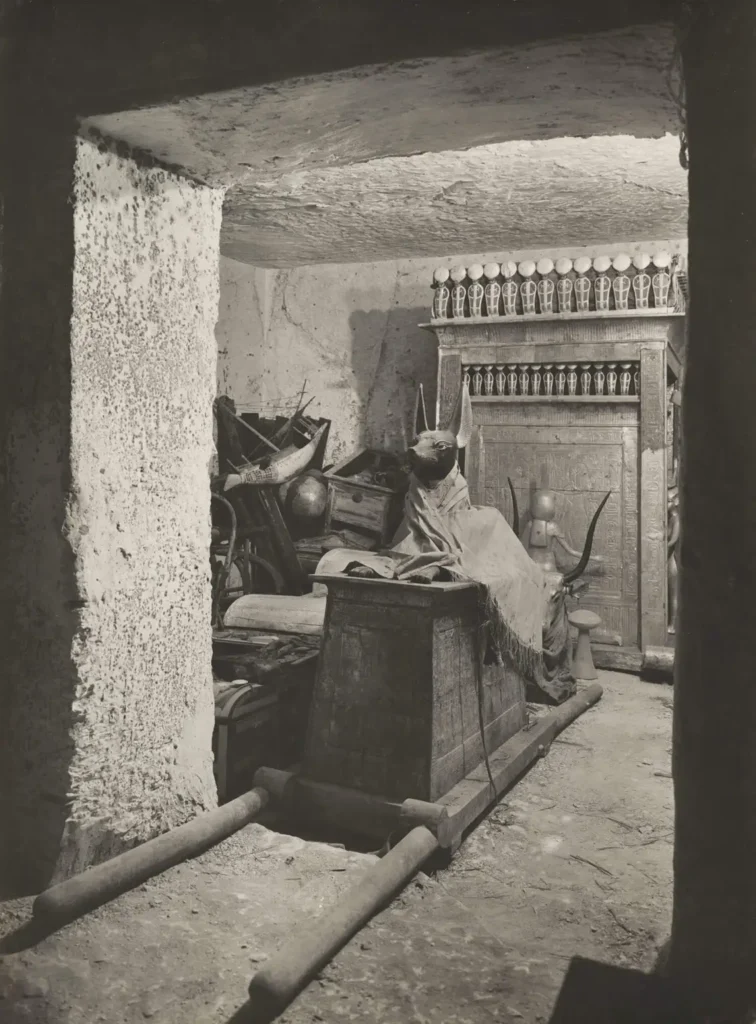The Tutankhamun Shrine of Anubis

This statue of Anubis was fixed on the sliding cover of a casket in the form of a shrine. The shrine rested on a litter which was used to carry the image of the god in processions. The statue was found at the entrance to the Treasure Room with its nose turned towards the funerary chamber. Probably so that its threatening appearance would frighten any intruders.
When it was found, it was wrapped in a linen cloth dated to the seventh year of the reign of Akhenaten with only the head left uncovered. A finer piece of cloth, a scarf and a garland of lotus and lily flowers encircled the statue’s neck. Between the front paws there was a scribe’s ivory tablet that had belonged to Meritaten. She was one of the six daughters of Akhenaten and Nefertiti.

Anubis Shrine of Tutankhamun. Egyptian Museum, Cairo. JE 61444
Anubis or Anpu was the god of mummification, cemeteries and the dead. Since jackals were often seen in cemeteries, the ancient Egyptians believed that Anubis watched over the dead. Anubis was the god who helped to embalm Osiris after he was killed by Seth.
Anubis Shrine
The statue is made from wood lined with stucco and tar. The inside of the ears, the bands around the neck, the edging of the eyes and the eyebrows are all rendered in gold; the eyes are made from calcite and obsidian and the fingernails from silver.
The shrine casket is decorated with two rows of alternating pairs of djed and tit signs, the symbols associated with Osiris and Isis. Inside there were amulets made from faience, two alabaster vases, and eight breast plates.

Treasury of Tutankhamun, 1926, by Harry Burton. A small room off the burial chamber in the tomb of Tutankhamun.
Thieves had undoubtedly rummaged through the casket as the objects, originally packaged and placed in compartments, were found heaped in disorder.
Anubis was represented as a black dog or in a hybrid form with the head of a dog and the body of a man. He was the lord of the necropolis and oversaw embalming rites; he was also responsible for guiding the dead to the Underworld and presenting them before Osiris for the weighing of the soul.
During the funerary ceremonies, the role of the god was interpreted by a priest who wore the mask of a jackal.

Anubis, Egyptian god of the dead from a chest in the form of a shrine, from the tomb of Tutankhamun
New Kingdom, late 18th Dynasty, reign of Tutankhamun, ca. 1232-1223 BC. From the Tomb of Tutankhamun (KV62), Valley of the Kings, West Thebes. Now in the Egyptian Museum, Cairo. JE 61444